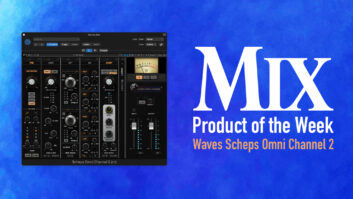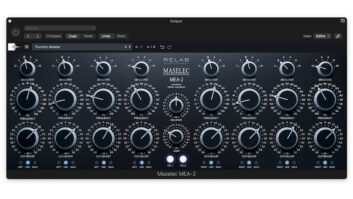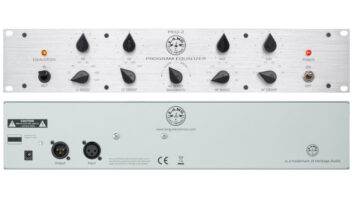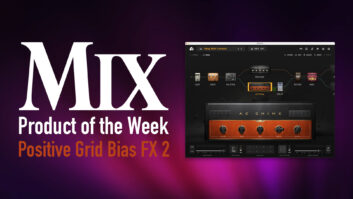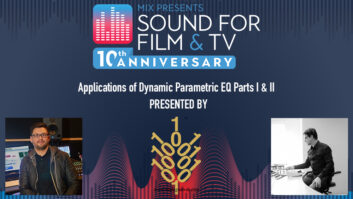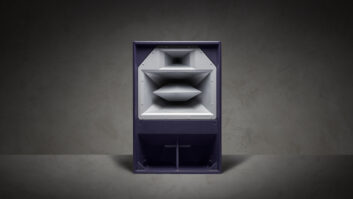Since Millennia (then known as Millennia Media) introduced its acclaimed HV-3 high-voltage mic preamp several years ago, the company’s name has been synonymous with extremely transparent solid-state circuit designs. Forssell Technologies was a kindred firm producing state-of-the-art vacuum tube gear with a similarly neutral sonic signature. The two companies merged in September 1997, and the Millennia NSEQ-2 2-channel parametric equalizer is the first offspring of that marriage. Already generating interest, the NSEQ-2 is a nominee for a 1999 TEC Award.
TWIN, MINIMALIST AUDIO PATHSThe NSEQ-2 features dual circuit paths, one solid-state and the other vacuum tube. Front panel push-button switches allow you to select the topology you want, independently for each channel. The solid-state path is an all-discrete, Class-A FET amplifier path. The vacuum tube path is all Class-A triode. Neither signal path uses any transformers.
Each channel features four active filters. But, unlike other active filter designs, which place the filters in-line or in parallel in the audio path, Millennia’s proprietary technology places all filters in a shunt from the main circuit to ground. Because the filters are not technically in the audio path, each band has minimal interaction with the others.
If this sounds a bit vague, it’s on purpose. Millennia is reticent to reveal its trade secrets. But what will grab most people’s attention is that there is only one active stage in the entire audio path from input to output in unbalanced configuration. One amplifier serves as input buffer, EQ amplifier and output driver. Millennia says that this minimalist approach yields a signal-to- noise ratio improvement of greater than 20 dB over passive designs.
The NSEQ-2 ships with unbalanced I/O in its standard configuration and lists for $2,995. Balanced I/O is a $300 option, but this adds an additional series-connected amplifier to each channel’s audio path. Although this causes some slight degradation of the minimalist audio path, it provides 6 dB more headroom and is worth considering. Switching from unbalanced to balanced mode or vice versa is simple: Move six jumpers inside the chassis.
CONNECTIONS AND CONTROLSThe two-rackspace NSEQ-2 weighs 25 pounds and is built like a truck. You’ll probably want to leave an extra space both above and below the unit; this puppy gets quite warm.
Rear panel I/O is via 3-pin XLR jacks. In unbalanced mode, pin 1 is chassis ground, pin 2 is hot signal, and pin 3 is tied to audio ground. Connections to balanced gear areplug-and-play. Rounding out the rear panel are an earth/audio ground jumper (remove this to quash ground loops), a removable fuse holder block (for selecting 100-120 or 200-240VAC operation) and standard IEC power receptacle. Thankfully, there’s a power switch, with an associated LED, on the front panel.
The front panel is a work of art, with an updated retro look. Large, knurled, aluminum rotary knobs provide boost and cut for each of the four bands on each channel. The knobs offer 21 detented positions, providing repeatable settings. Large red, yellow and green LEDs are inset behind push-button switches. They light when various functions are active and provide airline cockpit decor for your darkened control room.
There are independent switches/LEDs for bypassing each channel, bypassing each of the four filters on each channel and switching audio paths (tube or solid-state) for each channel. When a channel is bypassed, its input is hard-wired directly to its output. Gain range switches toggle the boost/cut controls between +/-10dB and +/-20dB ranges; the narrower range is best for mastering applications and light-handed tweaking.
The NSEQ-2’s filter setups offers a lot of flexibility. Low and high bands are switch-selectable to be shelf or peaking (bell curve) type. Shelving provides a 6dB/octave slope. The end-band Q is fixed at 1.0 for peaking EQ. The rotary frequency select switches for these bands are mil spec and feature gold contacts. They step through only six fixed frequencies for each band, but the two middle band frequency controls overlap so that any frequency is available at your whim. The low band steps through 20, 34, 56, 100, 180 and 270 Hz; the high band steps through 4.8, 5.8, 8.0, 10, 16 and 21 kHz.
The two middle bands are true parametric types, with sweepable Q knobs provided for each band. Q can be continuously adjusted from 0.4 to 4.0. The frequency select knobs for the two middle bands are also continuously variable. Push-button switches kick in “10x” multipliers for these frequencies, greatly extending their range. Depending on how these switches are set, the low-mid frequency knob sweeps through 20 Hz to 220 Hz or 220 to 2.5k Hz, and the high-mid knob sweeps through 250 to 2.5k Hz, or 2.5 to 25 kHz. (The use of standard value capacitors creates a frequency range that is not exactly 10x for the low-mids, but close enough for practical use.)
PUT TO THE TESTIt’s difficult to describe the NSEQ-2’s sound, because it is so amazingly transparent and free of artifacts. As one would expect, the solid-state path is a tad more precise and focused. Vacuum tube mode provides a hair more depth and texture, and a slightly sweeter high end. Yet, the spectral balance is not noticeably shifted in any way.
This is not a box you would choose to “tubify” something to death. Which is not to say that the NSEQ-2 won’t warm things up. On the contrary, its tube path gave an inherently hard-sounding fiddle a pretty softness that the EQ on my 02R could not provide. It’s just that the effect is subtle. Unlike some other processors that change your mix too much before you even begin to tweak them, this is a box you could use for delicate mastering applications. The 1dB boost/cut increments may not be fine enough for every mastering situation, but they should do for many.
The NSEQ-2 is quiet as a mouse. With all bands switched in and gain knobs nulled, I could hear no added noise (this even in vacuum tube mode). In this state, the unit also added no discernible coloration to the sound compared to when both channels were bypassed.
In mixdown sessions, the low shelving EQ was flexible enough to filter out rumble as well as air turbulence on close-miked voice-overs. The Q range for mid bands is fairly broad, though I’d like to see deeper notching capability. The channel and band bypass switches do not pop when you switch them in and out. Switching between solid-state and tube paths causes a momentary dip and quick recovery in output level, but it’s nothing too disconcerting and far preferable to a speaker-nuking pop.
Generally speaking, all controls have a sturdy feel and positive action, although the detents on one of the boost/cut knobs on my review unit were a tad mushy. The knob settings for center frequency and Q are a tad evasive in low light or at a distance. I’d also like to see more frequencies screened on the front panel; the continuous rotary controls for the middle bands only note five frequencies each, and a couple more would hasten finding narrow problem bands. Also, the detents on the boost/cut knobs don’t line up with the hash marks screened on the front panel. According to Millennia, this has been fixed in the current version.
My biggest complaint is that the NSEQ-2, in unbalanced mode, would distort when fed flute, xylophone or classical harp tracks from my 02R’s master bus at pre-converter levels at or above 3 dBFS-even with all bands set for cut. Once I put the unit into differential (balanced) mode, however, I had all the headroom I needed, and the unit still sounded absolutely gorgeous.
CONCLUSIONSHaving output gain controls on the NSEQ-2 would allow you to attenuate levels going to downstream units that afford less headroom, which could be an issue when considerable EQ boost is used. But most other devices have input trim controls. Do we really need I/O amplifiers at every point along a signal chain? The dearth of amplifiers in the audio path is no doubt one of the reasons this box sounds so incredibly transparent and quiet. It’s a design philosophy you’ll wholeheartedly endorse as soon as you hear the first strains of music through this world-class equalizer. And the twin topology design gives you essentially two different units for the price of one. The bottom line: For mission critical EQ applications where transparency is a paramount necessity, the NSEQ-2 is king. Prepare to be thrilled.
Millennia, 4200-B Day Spring Court, Placerville, CA 95667-9500; 530/647-0750; fax 530/647-9921; www.milmedia.com.

